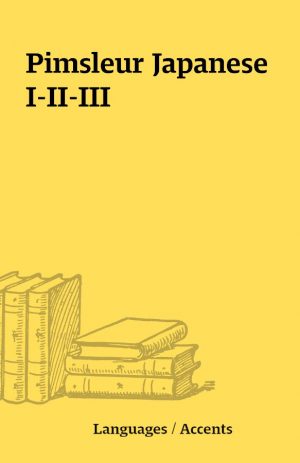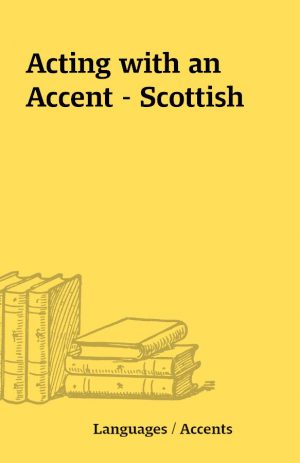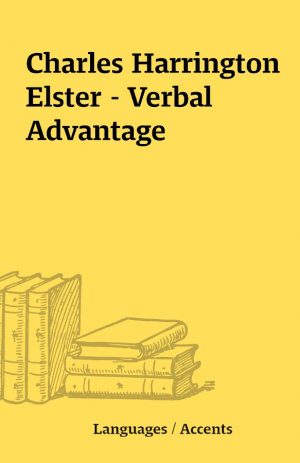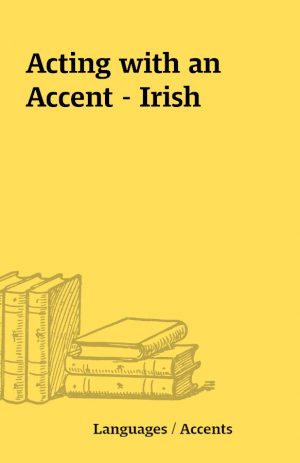Mezzadri, Balboni – Rete! Corso Multimediale di Italiano per Stranieri 1-3
Rete! Multimedia Italian Course 1-3
[3DVDs, 6CDs, 4 e-books – 4PDFs, 312MP3s, 3DVD rips]
Description
Ciao a tutti!This is a super-robust 3 level course, featuring 15 units. Each level consists of 5 units and includes a DVD (all menus fully clickable in VLC), at least one e-book per level, as well as an abundance of audio lessons (6CDs worth). For level 2, for whatever reason, the track numbers are listed in Russian, however the content is 100% in Italian, so please don’t let this concern you – this program can be used by any student of Italian regardless of mother tongue. The PDF files are unfortunately in black and white and aren’t OCRed, but nevertheless all the content is perfectly legible, and is presented in a fun and engaging way, including many exercises, dialogs, and games (such as crosswords, word searches, and countless worksheets). It teaches grammar, vocabulary, usage, pronunciation, and a substantial amount of culture both explicitly and implicitly (see below for more detail on the rigorous, well-rounded curriculum) – all in an immersive format. Because it is so immersive, depending on your learning style, you might want to get some basics under your belt first, or just dive in and start learning – either way you are sure to learn a ton of Italian if you go through this amazing course! Now, I can’t swear that every last iota of the program is included here (for example, the teacher’s manuals and web-based support are obviously not included), but in terms of student resources, this looks pretty complete and certainly is enough to take you from beginner to relatively advanced – you just gotta put in the time. Good luck!Va bene!? Andiamo!Here is the link to the level 1 page, from which you can browse to the other levels:http://www.rete.co.it/rete1.cfmHere’s some of the verbiage from that page (translation below) – your immersion starts now:Perché una “Rete!” Questo manuale nasce dall’intersezione tra tre forze:da un lato nasce nell’alveo della tradizione di didattica dell’italiano: è organizzato in unità didattiche monotematiche, attribuisce un ruolo chiave alla scoperta della complessità della nostra grammatica, affianca testi della vita quotidiana e testi letterari, offre largo spazio alla cultura e civiltà del nostro variegato Paese, e così via;d’altro canto esso trasporta questa tradizione su uno sfondo europeo, facendo proprie le lezioni della didattica dell’inglese, del francese e del tedesco: il curricolo è progettato con riferimento al Livello Soglia del Consiglio d’Europa ed è basato su un impianto “multisillabo”, cioé sull’interazione e l’equilibrio di un sillabo grammaticale/strutturale, uno nozionale/funzionale, uno lessicale, uno relativo allo sviluppo delle abilità di ascolto, parlato, lettura e scrittura, uno sillabo situazionale, uno fonetico, uno culturale; tutti questi sillabi, che l’insegnante ha a disposizione in un’ampia sinossi, richiedono circa 300 ore per condurre ad un livello intermedio/avanzato e si realizzano sul piano metodologico per mezzo di un approccio basato sulla soluzione di problemi e sul “fare con” piuttosto che “lavorare su” la lingua;infine, si mettono in pratica alcune delle linee più avanzate della ricerca glottodidattica italiana: l’approccio induttivo alla grammatica, che viene scoperta dallo studente sotto la guida dell’insegnante; il fatto che l’accuratezza della forma ha pari dignità della capacità meramente pragmatica, comunicativa; l’invito a riflettere su quanto si è appreso (ogni unità si conclude con una sintesi in cui lo studente traccia un bilancio facendo preciso riferimento contrastivo con la propria lingua madre). L’autovalutazione, sebbene guidata e controllata dal docente, è ritenuta essenziale per cui ogni UD ha una scheda di autovalutazione da compilare, ritagliare, consegnare all’insegnante.Queste tre direttrici agiscono sullo sfondo creato dal vorticoso mutare degli strumenti: se da un lato si tratta di un manuale “tradìzionale”, in tre volumetti per la classe e altrettanti quaderni per casa, con cassette, ecc., dall’altro si colloca nel mondo nuovo in cui è possibile fornire:floppy con esercizi supplementari;collegamenti in rete per approfondimento dei temi trattati nelle unità (indicati con un simbolo), in modo che lo studente che ha accesso a un computer possa approfondire i temi usando l’italiano in rete, oltre che studiandolo sul libro, e costruire, insieme alla propria classe, all’insegnante o autonomamente, scambi con altri studenti e classi sulla base di progetti didattici stimolati dagli argomenti trattati in RETE!;una banca dati presso il sito Guerra per l’aggiornamento dei materiali di civiltà, per ulteriori attività, esercizi, ecc., con cui integrare il libro base;un “luogo comune” in rete in cui gli insegnanti che usano RETE! possono fare commenti, suggerire alternative, fornire integrazioni, dialogare tra di loro e con gli autori.Per queste sue caratteristiche, per il fatto di essere il risultato di una rete dei fili che hanno percorso la glottodidattica italiana ed europea in questi anni e di essere il centro di una rete di connessioni virtuali tra studenti e docenti di italiano di tutto il mondo, il titolo RETE! non è solo un omaggio al momento più entusiasmante dello sport preferito degli italiani (uno sport che è ambasciatore di italianità in tutto il mondo, dove anche chi non conosce Dante e Goldoni sa mormorare Baggio o Maldini), ma è l’essenza stessa del progetto, costruito sulla trama della tradizione e l’ordito dell’innovazione. Google translated (with some manual edits):Why a “Network!”This manual is born from the intersection of three forces:on the one hand it is born in the tradition of Italian teaching: it is organized into single-issue teaching units, it assigns a key role to the discovery of the complexity of our grammar, alongside texts of everyday life and literary texts, it offers ample space to culture and civilization of our diverse country, and so on;on the other hand, it transports this tradition on a European background, taking on the lessons of teaching English, French and German: the curriculum is designed with reference to the Council of Europe threshold level and is based on a system ” multisyllabus “, that is, on the interaction and balance of a grammatical / structural syllabus, a notional / functional, a lexical one, one related to the development of listening, speaking, reading and writing skills, a situational syllabus, a phonetic, a cultural ; all these syllables, which the teacher has available in a wide synopsis, require about 300 hours to lead to an intermediate / advanced level and are carried out on the methodological level by means of an approach based on solving problems and on “doing with “rather than” working on “the language;finally, some of the most advanced lines of Italian glottodidactic research are put into practice: the inductive approach to grammar, which is discovered by the student under the guidance of the teacher; the fact that the accuracy of form has equal dignity of merely pragmatic, communicative capacity; the invitation to reflect on what has been learned (each unit concludes with a summary in which the student draws a balance sheet by making a precise contrasting reference with his mother tongue). The self-assessment, although guided and controlled by the teacher, is considered essential for each UD to have a self-assessment form to be completed, cut out, delivered to the teacher.These three directions act on the background created by the whirling change of instruments: if on the one hand it is a “traditional” manual, in three volumes for the class and as many notebooks for the house, with boxes, etc., on the other new world in which it is possible to provide:floppy with additional exercises;network links to learn more about the topics covered in the units (indicated with a symbol), so that the student who has access to a computer can deepen the themes using Italian on the net, as well as studying it on the book, and build, together with class, teacher or independently, exchange with other students and classes on the basis of educational projects stimulated by the topics covered in NETWORK!a database at the War site for the updating of civilization materials, for further activities, exercises, etc., with which to integrate the base book;a “common place” on the net where teachers who use NETWORK! they can make comments, suggest alternatives, provide integrations, dialogue with each other and with the authors.Because of these characteristics, due to the fact of being the result of a network of wires that have covered the Italian and European glottodidactics in recent years and to be the center of a network of virtual connections between Italian students and teachers from all over the world, the title NETWORK! it is not only a tribute to the most exciting moment of the favorite sport of Italians (a sport that is an ambassador of Italianness all over the world, where even those who do not know Dante and Goldoni can murmur Baggio or Maldini), but it is the essence of the project , built on the plot of tradition and the warp of innovation.Arriverderci!
You must be logged in to post a review.






Reviews
There are no reviews yet.